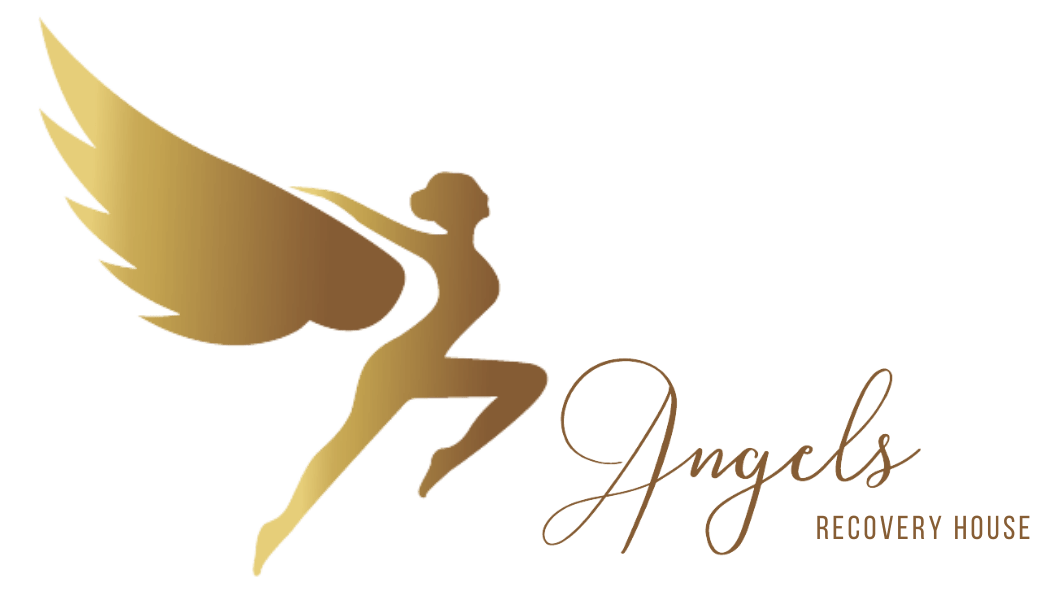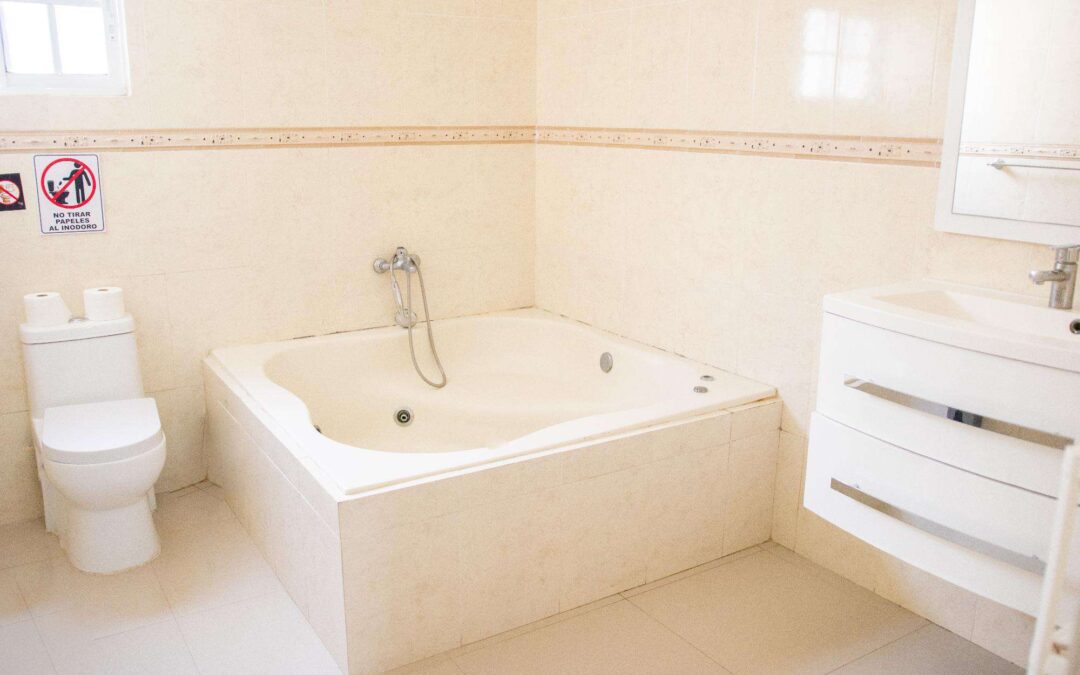Are you planning to undergo a surgical procedure? Congratulations on taking the first step towards a healthier and happier you! At Angel Recovery House, he Ultimate Guide to a Smooth and Comfortable Recovery Journey the 1st reason, we understand that the road to recovery can be challenging, but we are here to support you every step of the way. In this guide, we will walk you through everything you need to know to ensure a smooth and comfortable recovery journey.
Table of Contents

The Ultimate Guide to a Smooth, Comfortable Recovery After Surgery
This comprehensive guide covers all aspects of recovering comfortably after surgery. Follow our tips to manage pain properly, avoid complications, maintain a positive attitude, transition smoothly back to normal life and more. We’ll provide actionable advice to help make your recovery journey as smooth as possible.
Preparing Your Mind and Managing Expectations.
Mental preparation is just as important as physical preparation for surgery recovery. Here’s how to get your mindset right:
- Set realistic expectations about discomfort and timeframes for seeing results. Having achievable goals helps you stay motivated.
- Practice relaxation techniques like deep breathing, visualization and meditation to stay calm pre and post-op.
- Communicate your fears and concerns with loved ones—their support is invaluable.
- Stick to prescribed pain medication routines, therapy exercises and doctor’s orders to stay on track.
Preparing Your Home for Maximum Comfort.
Adapt your home so it’s optimized for rest, safety and convenience during recovery:
- Clear pathways, install ramps, get mobility aids if needed to make moving around easier.
- Stock up on supplies like gauze, towels, disinfectant, thermometer and medications.
- Meal prep healthy, soft foods or arrange for grocery/meal delivery.
- Schedule help from family or friends for tasks like cleaning, errands and transportation.
Effectively Managing Pain and Discomfort.
Don’t let pain derail your recovery. Use these proven tips to minimize discomfort:
- Take medications only as prescribed to balance pain relief with safety.
- Try complementary therapies like ice/heat packs, massage, acupuncture to reduce inflammation and stiffness.
- Change positions regularly and rest with pillows for optimal support and blood flow.
- Distract yourself with light activity like reading, puzzles or listening to music.
Caring for Your Incision Properly.
Improper incision care leads to complications. Be diligent about:
- Cleaning the area gently with mild soap, patting dry and applying topical ointments per directions.
- Watching for signs of infection like oozing, redness and fever—report these immediately.
- Avoiding soaking the incision until healing is complete and approved by your doctor.
- Wearing compression garments if prescribed to minimize swelling.
Preventing Common Complications.
With some precautions, you can avoid complications that hamper recovery:
- Drink plenty of water, juices, teas and eat fiber to prevent opioid-induced constipation.
- Take short walks and stretch periodically to stimulate circulation and prevent blood clots.
- Try sleep aids, limiting naps and relaxation techniques to address insomnia.
- Perform prescribed exercises consistently to regain strength and mobility and avoid stiffness.

Eating Right to Fuel Healing.
Nutrition significantly impacts your recovery. Prioritize:
- High protein foods like yogurt, eggs, beans and fish to repair tissue.
- Anti-inflammatory fruits and vegetables rich in Vitamin C and antioxidants.
- Hydrating liquids like electrolyte drinks, herbal tea, broths and smoothies.
- Whole grains and high fiber foods to prevent constipation.
- Avoid heavy, greasy and spicy foods that are hard to digest.
Staying Active to Regain Function.
Restricting movement too much slows recovery. Include:
- Short, gentle walks around the house or block to stimulate circulation. Increase distance gradually.
- Stretching and light range of motion exercises to prevent stiffness and blood clots.
- Low-impact stationary cardio like biking, swimming or the elliptical once approved.
- Yoga, Pilates and light resistance training after 4-6 weeks to rebuild strength.
Maintaining a Positive Attitude and Outlook.
Your mindset influences your physical healing. Here’s how to stay upbeat:
- Visualize your goals and the benefits to come—this gives discomfort purpose.
- Join online or in-person support groups to connect with fellow recoverers.
- Celebrate milestones like improved mobility and reaching new recovery phases.
- Keep perspective—this is temporary. Focus on positive progress.
Transitioning Back to Your Routine.
Ease back into activities gradually so you don’t overdo it. Take it slow by:
- Listening to your body for signs of overexertion like pain or fatigue.
- Clearing exercise and sexual activity with your doctor.
- Prioritizing rest when needed. Recovery is not linear.
- Slowly resuming responsibilities like work and childcare duties.
With diligence, patience and proactive self-care, your recovery can be a time of reflection, growth and gratitude for improved health rather than a difficult struggle. Use these tips to take control and be kind to your body. Thriving through recovery will empower you to fully enjoy your beautiful results for years to come!
Embark on your recovery journey with confidence and peace of mind, knowing that Angel Recovery House is here to ensure your well-being and success. Contact us today to learn more about our services and experience the exceptional care and comfort that sets us apart. Your smooth and comfortable recovery starts here at Angel Recovery House.


Почему немеют икры на ногах https://e-pochemuchka.ru/pochemu-nemeyut-ikry-na-nogah/
мтс цены
http://jobs.freightbrokerbootcamp.com/employer/epsontario8380/
мтс тв
мтс цены
https://www.famahhealthcareservices.com/employer/inetrnet-domashnij-ekb/
мтс домашний интернет екатеринбург
мтс екатеринбург
https://www.nc-healthcare.co.uk/employer/inetrnet-domashnij-ekb-3/
мтс телевидение екатеринбург
мтс подключить
https://job.da-terascibers.id/employer/inetrnet-domashnij-ekb
мтс интернет
мтс домашний интернет
https://www.ritej.com.tn/employer/inetrnet-domashnij-ekb-2/
мтс телевидение
сайт мтс екатеринбург
https://egrup.ro/profile/berenicetyner9
мтс телевидение екатеринбург
мегафон интернет екатеринбург
https://ekb-domasnij-internet-2.ru
мегафон тарифы екатеринбург
мегафон тарифы екатеринбург
https://ekb-domasnij-internet-3.ru
мегафон подключение екатеринбург
мегафон интернет екатеринбург
https://ekb-domasnij-internet.ru
мегафон телевидение
билайн домашний интернет краснодар
https://infodomashnij-internet-krasnodar-2.ru
билайн интернет краснодар
билайн интернет краснодар
https://infodomashnij-internet-krasnodar-3.ru
билайн тарифы на интернет
билайн интернет
https://plus-domashnij-internet-krasnodar-2.ru
билайн подключить краснодар
билайн подключение краснодар
https://plus-domashnij-internet-krasnodar.ru
билайн телевидение
билайн тв
https://plus-domashnij-internet-krasnodar-3.ru
билайн подключение
билайн тарифы краснодар
https://plus-domashnij-internet-krasnodar.ru
билайн телевидение краснодар
билайн подключить
https://plus-domashnij-internet-krasnodar-3.ru
билайн подключение краснодар
билайн подключить
https://plus-domashnij-internet-krasnodar-2.ru
билайн цены
сайт билайн краснодар
https://plus-domashnij-internet-krasnodar.ru
билайн подключение
билайн подключить краснодар
https://plus-domashnij-internet-krasnodar-3.ru
билайн подключить
мегафон интернет екатеринбург
мегафон тарифы на интернет
мегафон телевидение
мегафон подключение
https://plus-ekb-domasnij-internet-2.ru
провайдер мегафон
мегафон телевидение екатеринбург
https://plus-ekb-domasnij-internet-3.ru
провайдер мегафон
мегафон подключение екатеринбург
https://plus-ekb-domasnij-internet-3.ru
мегафон тв екатеринбург
мегафон домашний интернет
мегафон интернет
мегафон подключение екатеринбург
мегафон домашний интернет
https://plus-ekb-domasnij-internet-2.ru
мегафон екатеринбург
билайн тв кемерово
https://blatini.com/profile/katrinapenn909
билайн интернет кемерово
мтс тарифы на интернет
https://www.teamlocum.co.uk/employer/asa/
мтс интернет
мтс тарифы краснодар
https://ejobs1.com/employer/taylah/
мтс подключение
мегафон цены
https://dolphinplacements.com/companies/brodie/
сайт мегафон ростов
билайн домашний интернет
https://eleeo-europe.com/employer/thurman/
билайн телевидение
ттк подключить
https://dimans.mx/employer/ttk-tarif-services/
ттк барнаул
мтс телевидение
https://www.jobtalentagency.co.uk/employer/jeannette/
мтс телевидение
ттк тарифы ростов
https://rhcstaffing.com/employer/leroy/
ттк тв ростов
мтс домашний интернет
https://ukskilledworkfinder.com/employer/izetta/
мтс тв краснодар
провайдер мегафон
https://hortpeople.com/companies/vivian/
мегафон подключение ростов
билайн интернет
https://jobs.web4y.online/employer/robyn/
билайн подключение кемерово
билайн интернет кемерово
https://www.ritej.com.tn/employer/robbin/
билайн тарифы кемерово
мтс домашний интернет
https://koubry.com/companies/melvin/
мтс телевидение
провайдер мегафон
https://elitevacancies.co.za/companies/katrice/
мегафон цены
ттк цены
https://cvbankye.com/employer/ttk-tarif-services/
ттк цены
мтс тарифы на интернет
https://www.jobsalert.ai/employer/carmon/
мтс домашний интернет
ттк тв
https://skilling-india.in/employer/huey/
ттк цены
билайн домашний интернет
https://philadelphiaflyersclub.com/read-blog/13574_bilajn-kemerovo-proverka-dostupnosti-uslug-po-adresu.html
билайн подключение
мегафон тв ростов
https://logisticconsultant.net/anbieter/abbie/
провайдер мегафон
мтс интернет кемерово
http://epsontario.com/employer/sherryl/
сайт мтс кемерово
мтс подключение краснодар
https://myjobapply.com/employer/rory/
мтс цены
мегафон телевидение
https://qademo2.stockholmitacademy.org/employer/hugh/
мегафон интернет ростов
ттк подключить барнаул
https://talentsplendor.com/employer/ttk-tarif-solutions/
ттк подключить
ттк подключение барнаул
https://studentvolunteers.us/employer/ttk-tarif-llc/
ттк тв барнаул
ттк подключить ростов
https://www.mpowerplacement.com/employer/kerstin/
ттк интернет ростов
ттк телевидение
https://myjobapply.com/employer/malissa/
ттк подключить ростов
билайн тв кемерово
http://sbstaffing4all.com/companies/lukas/
билайн телевидение кемерово
мтс подключение
https://www.globalscaffolders.com/employer/abigail/
мтс кемерово
мтс краснодар
https://devnew.judefly.com/index.php?link1=read-blog&id=6490_mts-skrytye-komissii-v-tarifah-na-internet.html
мтс тв
мегафон подключение ростов
https://www.chuhaipin.cn/employer/trent/
мегафон ростов
ттк цены
https://pivotalta.com/employer/1780/ttk-tarif/
ттк подключение барнаул
ттк ростов
https://jobs.sudburychamber.ca/employer/marian/
ттк подключить
сайт билайн кемерово
https://www.bolsadetrabajotafer.com/employer/dean/
билайн подключить кемерово
мтс тарифы кемерово
http://schoolmein.com/companies/eileen/
сайт мтс кемерово
мтс интернет краснодар
http://pakgovtjob.site/companies/vincent/
мтс домашний интернет
мегафон тарифы на интернет
https://www.teamlocum.co.uk/employer/augusta/
мегафон ростов
ттк тарифы на интернет
https://job-daddy.com/employer/ttk-tarif-llc/
ттк интернет барнаул
ттк тв
https://www.virtuosorecruitment.com/employer/freddy/
сайт ттк ростов
This is such an insightful post! I love how you break things down in a way that anyone can understand. It’s clear that you put a lot of effort into your research. I’ve already shared this article with friends and will definitely be returning for more great content!
This blog post is truly impressive! Your way of explaining things is outstanding—it makes even complex topics easy to grasp. The content is well-organized, and the examples add so much clarity. I appreciate the time and effort you put into crafting this valuable information. I’ll definitely be visiting your blog again for more insights. Thanks for sharing such useful content! Keep up the excellent work, and I look forward to reading more from you in the future. Wishing you all the best.
Thanks for one’s marvelous posting! I truly enjoyed reading
it, you happen to be a great author. I will make sure to bookmark your
blog and will come back down the road. I want to encourage you to definitely continue your great job, have a nice holiday weekend!
Thanks for a marvelous posting! I quite enjoyed reading
it, you can be a great author.I will make sure to bookmark your blog and will often come back
later on. I want to encourage you to continue your great writing, have a nice afternoon!
These examples didn’t feel forced or out of place; they were thoughtfully chosen and helped ground the discussion in reality. The ability to connect theoretical ideas with practical, real-world applications is one of the reasons this post stood out. It made the material feel not just relevant, but also actionable.
This post was such a pleasure to read! You have an amazing way of making complex ideas easy to understand while keeping the discussion captivating. Your welcoming writing style makes learning effortless and enjoyable. The real-world experiences you include add another layer of depth and relatability. It’s clear that you put a lot of work into this, and I truly appreciate the knowledge you share. Can’t wait for more!
Very insightful post! I enjoyed reading this because the explanations are clear, and the information is well-structured. It’s always refreshing to see content that is both detailed and easy to follow. This blog does a great job of breaking down complex topics into simple terms. Keep up the excellent work!
I’m so grateful for your blog! Every post is a reflection of your dedication and expertise. You present ideas in such a unique and engaging way that makes reading your content an absolute pleasure. Thank you for sharing your wisdom and inspiring your audience!
This was such a fantastic and enlightening read! I truly appreciate the effort and knowledge you put into crafting this post. The way you break down concepts in an easy-to-understand and engaging manner is incredible. Your insights and practical advice are so valuable, and I can’t wait to implement them. Thank you for sharing such an inspiring message—I’m excited for more of your content!
This post was a great read! I love how you took a complicated topic and made it so accessible. Your practical tips are exactly what I needed, and I can’t wait to incorporate them into my daily life. It’s always a pleasure to read content that not only educates but also keeps you interested. Looking forward to your next post and more helpful advice. Thank you for sharing such useful information!
This was such a well-written and informative post! I appreciate how you took the time to explain everything in a way that is easy to follow. Your writing style is engaging, and it kept me interested from start to finish. It’s always great to find content that is both educational and enjoyable to read. I’ll definitely be revisiting this post in the future. Keep up the fantastic work—I’m looking forward to more of your insightful content!
провайдер мтс
https://dakresources.com/employer/grady1813/
мтс домашний интернет новосибирск
мтс подключить новосибирск
http://excelrenforcement.com/companies/hildegarde3748/
мтс подключить новосибирск
мтс тарифы на интернет
https://ekcrozgar.com/employer/fredric684/
мтс домашний интернет новосибирск
мтс подключить новосибирск
https://ubereducation.co.uk/companies/elane6587/
мтс цены
мтс домашний интернет
https://www.jobassembly.com/companies/miles7408/
мтс тарифы новосибирск
провайдер мтс
https://apex-workforce.com/employer/24inetrnet-domashnij-ekb/
мтс тв екатеринбург
мтс домашний интернет екатеринбург
https://careers.indianschoolsoman.com/employer/24inetrnet-domashnij-ekb/
мтс цены
What a wonderful blog post! I loved how the author broke down complex concepts into easy-to-understand points. The practical tips shared are actionable and easy to implement, which is always appreciated. The personal anecdotes made the content feel more relatable and enjoyable to read. It’s clear that a lot of thought and effort went into creating this post. I’m looking forward to more posts like this one! Keep up the great work – this post was both informative and helpful. Thanks for sharing such valuable insights with your readers!
мтс тарифы екатеринбург
https://galmudugjobs.com/employer/24inetrnet-domashnij-ekb-3/
мтс домашний интернет екатеринбург
This post was exactly what I needed! Your ability to explain things so clearly makes your blog one of my favorite resources. I appreciate the time and effort you put into researching and writing such valuable content. It’s always a pleasure to read your posts, and I walk away feeling more informed and inspired. Thank you for sharing your expertise with us—keep up the incredible work
мтс телевидение екатеринбург
https://xpressrh.com/employer/24inetrnet-domashnij-ekb-3/
мтс интернет
провайдер мтс
https://careers.jabenefits.com/employer/24inetrnet-domashnij-ekb-2/
мтс цены
мтс тарифы на интернет
https://www.ministryboard.org/employer/24inetrnet-domashnij-ekb-3/
мтс тв
мтс тв
https://cargadetrabalhos.pt/empresas/24inetrnet-domashnij-ekb-2/
мтс интернет екатеринбург
мтс екатеринбург
http://recruitmentfromnepal.com/companies/24inetrnet-domashnij-ekb/
мтс тв
мтс телевидение
https://stepstage.fr/employer/24inetrnet-domashnij-ekb-3/
мтс подключение
мтс телевидение екатеринбург
https://jobs.fabumama.com/employer/24inetrnet-domashnij-ekb-3/
мтс подключение
деньги под птс машины
avtolombard-11.ru/ekb.html
кредит под залог авто без отказа
займ под залог птс автомобиля
avtolombard-11.ru/kazan.html
автоломбард займ под птс
взять кредит под залог автомобиля
avtolombard-11.ru/kemerovo.html
деньги под залог авто
деньги в залог авто
avtolombard-11.ru
займ под птс спецтехники
деньги в долг под птс
avtolombard-11.ru/nsk.html
деньги под птс
деньги под залог птс быстро
https://jobs.quvah.com/employer/avtolombard-111930/
займ под птс без авто
автоломбард птс
http://excelrenforcement.com/companies/sportivoo9320/
деньги в кредит под залог машины
автомобиль под залог
https://www.hirerightskills.com/employer/zaim-pod-zalog-pts-14763/
кредит под птс автомобиля
кредит под залог автомобиля
https://bcstaffing.co/employer/13853/indianpharmajobs6736
кредит под залог машины
автоломбард в кемерово под залог
https://quikconnect.us/employer/avtolombard-115531/
автоломбард в кемерово под залог
взять кредит под залог автомобиля
https://globalhospitalitycareer.com/employers/firm2836/
кредит под птс кемерово
взять займ под птс
https://www.working.co.ke/employer/avtolombard-zalog-invest4782/
автоломбард москва под залог птс в москве
займ под залог машины
https://cyberdefenseprofessionals.com/companies/volna-pozice4276/
кредит залог птс в москве
авто под залог
https://tsopedu.org/blog/index.php?entryid=40985
получить займ под залог авто
автоломбард под авто
https://electricmotorshopjobs.com/employer/lesstagiaires2999/
взять кредит под птс
займ под залог птс автомобиля
avtolombard-pid-zalog-pts.ru/ekb.html
получить кредит под залог птс
займ под птс
avtolombard-pid-zalog-pts.ru/kemerovo.html
займ под птс авто
займ залог птс автомобиля
avtolombard-pid-zalog-pts.ru
получить кредит под залог машины
кредит под залог покупаемого авто
avtolombard-pid-zalog-pts.ru/nsk.html
взять деньги под птс автомобиля
наличные под залог автомобиля
zaim-pod-zalog-pts1.ru/ekb.html
взять деньги под залог птс
автоломбард
avtolombard-pid-zalog-pts.ru/kazan.html
автоломбард в казани круглосуточно
наличные под залог автомобиля
zaim-pod-zalog-pts1.ru/kemerovo.html
займ под птс
авто под залог
zaim-pod-zalog-pts1.ru
автоломбард москва птс
займ под залог авто в новосибирске
zaim-pod-zalog-pts1.ru/nsk.html
взять кредит под залог птс автомобиля
деньги под залог авто остается у вас
avtolombard-11.ru/ekb.html
взять деньги под залог птс автомобиля
займ под птс
avtolombard-11.ru/kazan.html
взять кредит под залог автомобиля
автоломбард под залог птс
avtolombard-11.ru/kemerovo.html
кредит под залог автомобиля кемерово
деньги под птс москва
avtolombard-11.ru
кредит залог авто наличные
автоломбард процент
avtolombard-11.ru/nsk.html
взять займ под птс
деньги под залог птс екатеринбург круглосуточно
https://onetable.world/read-blog/132532_%D0%BA%D0%B0%D0%BA%D0%B8%D0%B5-%D0%B0%D0%BB%D1%8C%D1%82%D0%B5%D1%80%D0%BD%D0%B0%D1%82%D0%B8%D0%B2%D1%8B-%D0%BA%D1%80%D0%B5%D0%B4%D0%B8%D1%82%D1%83-%D0%BF%D0%BE%D0%B4-%D0%B7%D0%B0%D0%BB%D0%BE%D0%B3-%D0%BC%D0%B0%D1%88%D0%B8%D0%BD%D1%8B-%D1%81%D1%83%D1%89%D0%B5%D1%81%D1%82%D0%B2%D1%83%D1%8E%D1%82.html
кредит под залог авто без подтверждения дохода
деньги под птс автоломбард
https://chaakri.com/employer/cafe-249078/
кредит под залог авто машины
займ под птс машины
https://cyltalentohumano.com/employer/avtolombard-115355/
кредит под птс авто
займ под залог машины
https://lgmtech.co.uk/employer/nujob8540/
кредит под птс казань
кредит под залог автомобиля кемерово
https://skillnaukri.com/employer/zaim-pod-zalog-pts-17710/
автоломбард залог птс
деньги под птс автомобиля москва
https://dg-network.it/employer/avtolombard-pid-zalog-pts2959/
кредит под птс авто
получить деньги под птс
https://karis.id/employer/gpponline6408/
взять деньги под залог авто
взять займ под залог машины
https://empleosrapidos.com/companies/avtolombard-pid-zalog-pts8438/
деньги в долг под залог машины
сервис займов под залог авто
https://applykar.com/employer/kaymack8136/
взять деньги под птс
деньги под залог документов на машину
avtolombard-pid-zalog-pts.ru/ekb.html
займ под птс без автомобиля
займ денег под залог автомобиля
avtolombard-pid-zalog-pts.ru/kemerovo.html
кредит под птс
деньги под залог птс москва круглосуточно
avtolombard-pid-zalog-pts.ru
займ залог авто
автоломбард новосибирск под залог птс в новосибирске
avtolombard-pid-zalog-pts.ru/nsk.html
получить деньги под залог птс
деньги в долг под залог машины
zaim-pod-zalog-pts1.ru/ekb.html
деньги под птс машины
кредит под птс казань
avtolombard-pid-zalog-pts.ru/kazan.html
взять кредит под залог автомобиля
кредит под залог автомобиля кемерово
zaim-pod-zalog-pts1.ru/kemerovo.html
займ птс
провайдеры по адресу дома
domashij-internet-ekaterinburg001.ru
подключить интернет
интернет провайдеры екатеринбург по адресу
domashij-internet-ekaterinburg002.ru
недорогой интернет екатеринбург
проверить провайдера по адресу
domashij-internet-ekaterinburg003.ru
подключить интернет по адресу
интернет провайдеры по адресу дома
domashij-internet-kazan001.ru
домашний интернет тарифы казань
подключение интернета казань
domashij-internet-kazan002.ru
тарифы интернет и телевидение казань
домашний интернет
domashij-internet-kazan003.ru
провайдеры интернета казань
домашний интернет тарифы
domashij-internet-msk001.ru
интернет провайдеры москва по адресу
какие провайдеры по адресу
domashij-internet-msk002.ru
проверить провайдеров по адресу москва
интернет по адресу москва
domashij-internet-msk003.ru
провайдеры в москве по адресу проверить
подключение интернета нижний новгород
domashij-internet-nizhnij-novgorod001.ru
интернет провайдеры по адресу дома
домашний интернет нижний новгород
domashij-internet-nizhnij-novgorod002.ru
проверить провайдеров по адресу нижний новгород
интернет провайдеры по адресу
domashij-internet-nizhnij-novgorod003.ru
провайдеры интернета в нижнем новгороде
домашний интернет новосибирск
domashij-internet-novosibirsk001.ru
интернет по адресу новосибирск
интернет провайдеры по адресу дома
domashij-internet-novosibirsk002.ru
дешевый интернет новосибирск
лучший интернет провайдер новосибирск
domashij-internet-novosibirsk003.ru
провайдер по адресу новосибирск
подключить домашний интернет санкт-петербург
domashij-internet-spb001.ru
провайдеры в санкт-петербурге по адресу проверить
домашний интернет подключить санкт-петербург
domashij-internet-spb002.ru
интернет по адресу санкт-петербург
подключить интернет по адресу
domashij-internet-spb003.ru
проверить интернет по адресу
какие провайдеры на адресе в екатеринбурге
domashij-internet-ekaterinburg001.ru
дешевый интернет екатеринбург
узнать интернет по адресу
domashij-internet-ekaterinburg002.ru
подключение интернета екатеринбург
тарифы интернет и телевидение екатеринбург
domashij-internet-ekaterinburg003.ru
проверить интернет по адресу
какие провайдеры интернета есть по адресу казань
domashij-internet-kazan001.ru
провайдеры по адресу дома
провайдер по адресу казань
domashij-internet-kazan002.ru
подключить проводной интернет казань
провайдер интернета по адресу казань
domashij-internet-kazan003.ru
провайдер интернета по адресу казань
узнать провайдера по адресу москва
domashij-internet-msk001.ru
интернет домашний москва
подключить домашний интернет в москве
domashij-internet-msk002.ru
домашний интернет тарифы москва
провайдер по адресу
domashij-internet-msk003.ru
провайдеры интернета москва
подключить интернет нижний новгород
domashij-internet-nizhnij-novgorod001.ru
подключить интернет
провайдеры домашнего интернета нижний новгород
domashij-internet-nizhnij-novgorod002.ru
провайдеры интернета нижний новгород
проверить провайдера по адресу
domashij-internet-nizhnij-novgorod003.ru
какие провайдеры интернета есть по адресу нижний новгород
лучший интернет провайдер новосибирск
domashij-internet-novosibirsk001.ru
подключение интернета по адресу
интернет провайдеры по адресу новосибирск
domashij-internet-novosibirsk002.ru
дешевый интернет новосибирск
провайдер интернета по адресу новосибирск
domashij-internet-novosibirsk003.ru
провайдеры в новосибирске по адресу проверить
подключить домашний интернет в санкт-петербурге
domashij-internet-spb001.ru
провайдеры интернета в санкт-петербурге по адресу
домашний интернет в омске
domashij-internet-omsk001.ru
домашний интернет тарифы
провайдеры интернета омск
domashij-internet-omsk002.ru
провайдеры домашнего интернета омск
интернет тарифы пермь
domashij-internet-perm001.ru
интернет провайдер пермь
подключить домашний интернет пермь
domashij-internet-perm002.ru
интернет домашний пермь
тарифы интернет и телевидение пермь
domashij-internet-perm003.ru
недорогой интернет пермь
интернет домашний ростов
domashij-internet-rostov001.ru
недорогой интернет ростов
подключить интернет в ростове в квартире
domashij-internet-rostov002.ru
подключить интернет ростов
тарифы интернет и телевидение омск
domashij-internet-volgograd001.ru
подключить интернет
интернет тарифы омск
domashij-internet-volgograd002.ru
подключить интернет тарифы омск
площадка для продажи аккаунтов маркетплейс аккаунтов соцсетей
купить аккаунт https://marketplace-akkauntov-top.ru
купить аккаунт https://magazin-akkauntov-online.ru
маркетплейс для реселлеров аккаунты с балансом
профиль с подписчиками профиль с подписчиками
гарантия при продаже аккаунтов маркетплейс аккаунтов
безопасная сделка аккаунтов гарантия при продаже аккаунтов
Website for Buying Accounts Website for Selling Accounts
Gaming account marketplace Online Account Store
Ready-Made Accounts for Sale Website for Buying Accounts
Marketplace for Ready-Made Accounts Social media account marketplace
Purchase Ready-Made Accounts accountsmarketplacehub.com
Account Purchase Account Acquisition
Account Catalog Account market
Website for Buying Accounts Account Store
Account Selling Platform Account Trading Platform
Guaranteed Accounts Secure Account Sales
online account store account trading service
profitable account sales website for buying accounts
accounts marketplace verified accounts for sale
account market accounts for sale
account trading platform account trading
account catalog website for selling accounts
buy account account sale
accounts for sale guaranteed accounts
account exchange service account selling service
account exchange service https://accounts-marketplace.org/
account exchange gaming account marketplace
accounts marketplace secure account sales
account acquisition sell account
secure account sales https://accounts-for-sale.org/
gaming account marketplace verified accounts for sale
accounts market social-accounts-marketplace.org
sell pre-made account account trading service
account exchange service account sale
account acquisition marketplace for ready-made accounts
secure account purchasing platform account trading platform
account trading platform sell pre-made account
sell account marketplace for ready-made accounts
gaming account marketplace account catalog
website for buying accounts secure account sales
account selling platform account marketplace
accounts for sale guaranteed accounts
marketplace for ready-made accounts profitable account sales